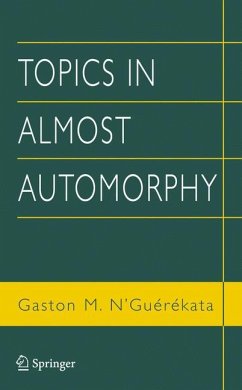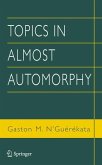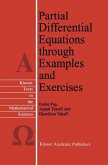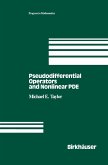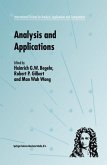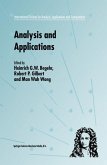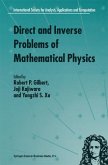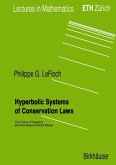This monograph presents recent contributions to the topics of almost periodicity and almost automorphy. Several new methods, including the methods of invariant subspaces and uniform spectrum, as well as various classical methods, such as fixed point theorems, are used to obtain almost periodic and almost automorphic solutions to some linear and non-linear evolution equations and dynamical systems. Almost periodicity and almost automorphy are also intensively developed on the more general structures called fuzzy-number type spaces. They have further potential applications to the study of differential equations, which model the real-world problems governed by imprecision due to uncertainty or vagueness, rather than randomness. In conclusion, the author indicates several open problems and directions for future research. This monograph is a great source of information and inspiration for researchers and graduate students from many mathematical fields.
Since the publication of our first book [80], there has been a real resiu-gence of interest in the study of almost automorphic functions and their applications ([16, 17, 28, 29, 30, 31, 32, 40, 41, 42, 46, 51, 58, 74, 75, 77, 78, 79]). New methods (method of invariant s- spaces, uniform spectrum), and new concepts (almost periodicity and almost automorphy in fuzzy settings) have been introduced in the literature. The range of applications include at present linear and nonlinear evolution equations, integro-differential and functional-differential equations, dynamical systems, etc...It has become imperative to take a bearing of the main steps of the the ory. That is the main purpose of this monograph. It is intended to inform the reader and pave the road to more research in the field. It is not a self contained book. In fact, [80] remains the basic reference and fimdamental source of information on these topics. Chapter 1 is an introductory one. However, it contains also some recent contributions to the theory of almost automorphic functions in abstract spaces. VIII Preface Chapter 2 is devoted to the existence of almost automorphic solutions to some Unear and nonUnear evolution equations. It con tains many new results. Chapter 3 introduces to almost periodicity in fuzzy settings with applications to differential equations in fuzzy settings. It is based on a work by B. Bede and S. G. Gal [40].
Hinweis: Dieser Artikel kann nur an eine deutsche Lieferadresse ausgeliefert werden.
Since the publication of our first book [80], there has been a real resiu-gence of interest in the study of almost automorphic functions and their applications ([16, 17, 28, 29, 30, 31, 32, 40, 41, 42, 46, 51, 58, 74, 75, 77, 78, 79]). New methods (method of invariant s- spaces, uniform spectrum), and new concepts (almost periodicity and almost automorphy in fuzzy settings) have been introduced in the literature. The range of applications include at present linear and nonlinear evolution equations, integro-differential and functional-differential equations, dynamical systems, etc...It has become imperative to take a bearing of the main steps of the the ory. That is the main purpose of this monograph. It is intended to inform the reader and pave the road to more research in the field. It is not a self contained book. In fact, [80] remains the basic reference and fimdamental source of information on these topics. Chapter 1 is an introductory one. However, it contains also some recent contributions to the theory of almost automorphic functions in abstract spaces. VIII Preface Chapter 2 is devoted to the existence of almost automorphic solutions to some Unear and nonUnear evolution equations. It con tains many new results. Chapter 3 introduces to almost periodicity in fuzzy settings with applications to differential equations in fuzzy settings. It is based on a work by B. Bede and S. G. Gal [40].
Hinweis: Dieser Artikel kann nur an eine deutsche Lieferadresse ausgeliefert werden.

